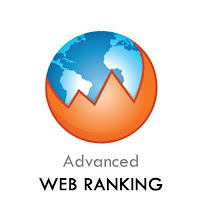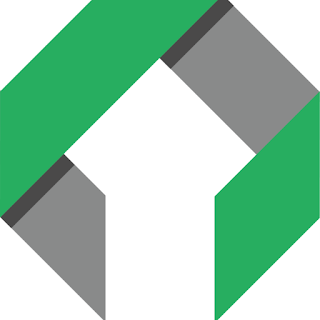Keyword Rank Tracking is an Essential part of every Online Marketing Campaign. It's especially important to all SEO Professional who work on Search Engine Optimization Project. Rank Tracker retrieves search engine rankings for pages and keywords, Some tools also track selected rankings over time to see which efforts are making the most impact on your SEO Campaign and show you the ranking changes.
Now, there are a lot of free and paid rank checker out there that help SEO Professionals to track keyword rankings. Some tools that work great at certain tasks but terrible at others. Before Writing this post, I did a lot of Research to bring you the Best Keyword Rank Checker for your SEO Project.
Moz Pro
In the Moz Pro plan, you can run up to five different campaigns at the same time. Because Moz limits the number of keywords you can track per campaign to 60, that totals 300 keywords you can track overall five campaigns, which can be limiting if you're running campaigns with different themes or that span multiple verticals. Rank tracking is thorough, though, with competitive analysis baked right in; you can see where you rank for your top keywords as well as where your top competitors rank.Price: Moz Pricing Plan Start From $99 to $499 /month and the also offer a 30-day free trial.
SEMrush
SEMrush's Pro version offers keyword suggestion and keyword rank tracking. Using SEMrush, you can track up to 500 keywords over five campaigns. The tools available for keyword research can display a keyword's search volume and help you gauge how well a keyword will perform on your site. The phrase match report will show you keywords related to prime keywords that can also help drive traffic to your site, but they may be less competitive, so it will be more possible to rank with them.Price: $69.95 – $549.95 / month
Advanced Web Ranking
Advanced Web Ranking allows you to closely monitor your keyword's performance and Rank Tracking from three different search engines: Google, Bing, and Yahoo. You can easily sort your keyword information to see how each of these search engines views your keywords. This is useful because, while you may be hitting all of Google's targets, you may be weak in Bing's search results and missing key traffic flows from them.Price: $49 – $499 / month, also offer FREE 30 day trial on all plans..
Ahrefs
Ahref's provides estimated keywords ranking data for keyword sets on both Google and Bing/Yahoo in multiple countries (US, UK, AU, DE, FR, ES, IT, BR, RU). The tool shows following information:- Position
- Keyword
- CPC
- Estimated cost
- Ranking URL
- Global search volume A
- dvertiser competition
- Last date checked
- Rating (estimated visitors per month based on assumed traffic distribution)
Price: $79 – $1,299 / month, and the also offer a free NEWBIE plan.
Link-Assistant Rank Tracker
Link-Assistant Rank Tracker Feature:- Automatically check your search engine rankings.
- Show if your site moved up or down in search results: Every time you check your keywords search engine rankings, Rank Tracker will conveniently show you the ranking difference so you can easily see if your site has moved up slipped for whatever reason.
- Collect data from 456 different search engines: Rank Tracker supports 456 international and local search engines so you can track your rankings using the ones that matter most to you. The currently supported SEs include Google, Yahoo! and Bing with their localized versions plus hundreds of others!
Price: Free – $124 - $299 / month (one time cost – this is desktop software)
WebCEO
WebCEO Rank Tracker Feature:370+ Global & Local Search Engines Rank Checking: You'll be able to check keyword rankings on more than 370 global and local search engines, including Google, Bing, Yahoo, Baidu, Goo, Voila, Seznam, Rediff, and more.
Search Engine Mobile Rankings vs. Desktop Search Results: Set Web CEO Rank Tracker to monitor both desktop and mobile rankings: go to settings and add the mobile versions of every search engine that you target.
Automated Rank Checks on Schedule: Automate your rank checks with Web CEO: have them monitored quarterly, monthly, weekly.
Email Alerts about Website Ranking Changes: Set email alerts regarding website ranking changes that occur above configured levels. You can be notified if one of your keywords left the top positions, a keyword lost more than a specified number of positions, your competitors' positions improved, etc.
YouTube Rank Checker: You can add YouTube.com as a standalone search engine in your WebCEO Rank Checker settings and start tracking your YouTube rankings.
Competitor Ranking Analysis: See if your competitors have better search engine rankings for the keywords that you target. Just add the URLs of competing websites in the Competitor section of the WebCEO Rank Checker settings.
Price: $75 – $375/ month (Discounts available), also offer a limited free plan.
AuthorityLabs
What Does Authority Labs Do?- Tracking keywords daily
- Tracking Google, Bing, and Yahoo SERPs
- Viewing estimated search volume (via a bar graph) for your tracked keywords
- Selecting a location all the way down to the zip code
- Viewing daily ranking charts for a selected keyword
- Exporting PDF reports for monthly, weekly, quarterly, *since added* date, and/or daily
- Comparison reports Comparing rankings against a competitor
- Sharing a public URL with a client for their project
- Exporting one domain or an entire account history in CSV format as part of a backup process
- Producing white label reports
Price: $75 – $99/ month (Discounts available), also offer a limited free plan.
Raven Tools
Raven's Rank Tracker lets you view average keyword ranking data that comes directly from Google and Bing. You have access to Impressions and Click Through Rates (CTRs), helping you to target high value keywords for a quicker SEO win. You'll be able to show clients progress over time as you work your way through the best keyword choices based on conversion potential.Price: $99 – $249 / month, and offer a 30 day limited free plan.
Traffic Travis
Traffic Travis keyword ranking reports allow you to see how your site is progressing using graphs and charts. These reports can be viewed online or exported as CSV and PDF files.Price: $97 / year, also offer a free plan.
Market Samurai
Market Samurai's rank tracker allows you to view your site's keyword progress as graphs, which clearly show increases and decreases in traffic. It also stores historical data on your keywords and your URLs so you can continuously view their progression. After viewing your reports, you can export data about any of your keywords as a CSV, where you can analyze it using Excel.Price: One Time Fee $149 and also offer a free limited edition.
Positionly
Positionly Track your keywords ranking results on the local or global market, depending on your needs. You can track everything in the most popular search engines - Google, Bing, Yahoo, and Yandex.Analyze your progress on a daily basis and understand how rankings affect your growth.
Price: Plan starts from $16 - $84/month, has a 14-day free trial.
SERPs
International keyword rankings: SERPs Check keyword rankings positions in Google or Yahoo from over 100 country and language combinations. SERPs free rank checker can lookup rankings in dozens of countries. Use it to spot check keyword rankings anytime.Mobile keyword rankings: Select mobile or desktop rankings. If mobile is selected, SERPs also highlight if Google is showing the "Mobile-friendly" tag next to a URL. If you want to track mobile rankings at a larger scale, read more about our mobile rank tracking solution.
Local keyword rank checker: See rankings from specific cities or zip codes. Check one keyword in a hundred different cities.
SERP checker: SERPs tool will return the top 250 SERP results for any given keyword if the site field is left blank. That way you can see what sites rank in the top 250 for any SERP.
Price: Plan starts From $497 - $1,997 / month and a Full Featured 30-Day Trial.
RankWatch
RankWatch Rank Checker calculates all your keyword rankings accurately and in an instant, whether you have 50 or 50,000 keywords, we will display your current rank, highest rank and Initial rank along with search volumes in top 100 serps.Trackers Track your site rankings on 177 search engines including Google, Yahoo, Bing and more using Rankwatch Rank Checker.Price: Plan starts From $29 - $449 / month and a 14 days free trail.
SERP Scan
SERP Scan Automatically Generates Search Engine Ranking Reports Clients want proof that search engine optimization works for them. Increased rankings are the best way to prove to your clients that your hard work—and their money—is making a positive impact and return on investment for their business. SERP Scan also offer Local Rank Tracking and YouTube Rank Tracking.Price: Plan starts From $99.99 - $399.99 / month with 30-day money back guarantee.
RankScanner
RankScanner Keep track of your search engine rankings through time, and quickly get an idea of which SEO tactics work the best.RankScanner Track up to 500 keywords per domain, for an unlimited number of websites. Even monitor your competitors' SEO rankings as well.
Price: Plan starts From 9€ - 49€ /month and FREE for Up to 30 Keywords.
What Keyword Ranking Tools do you use? please drop your recommendation in the comments and I'll add in this list.

























